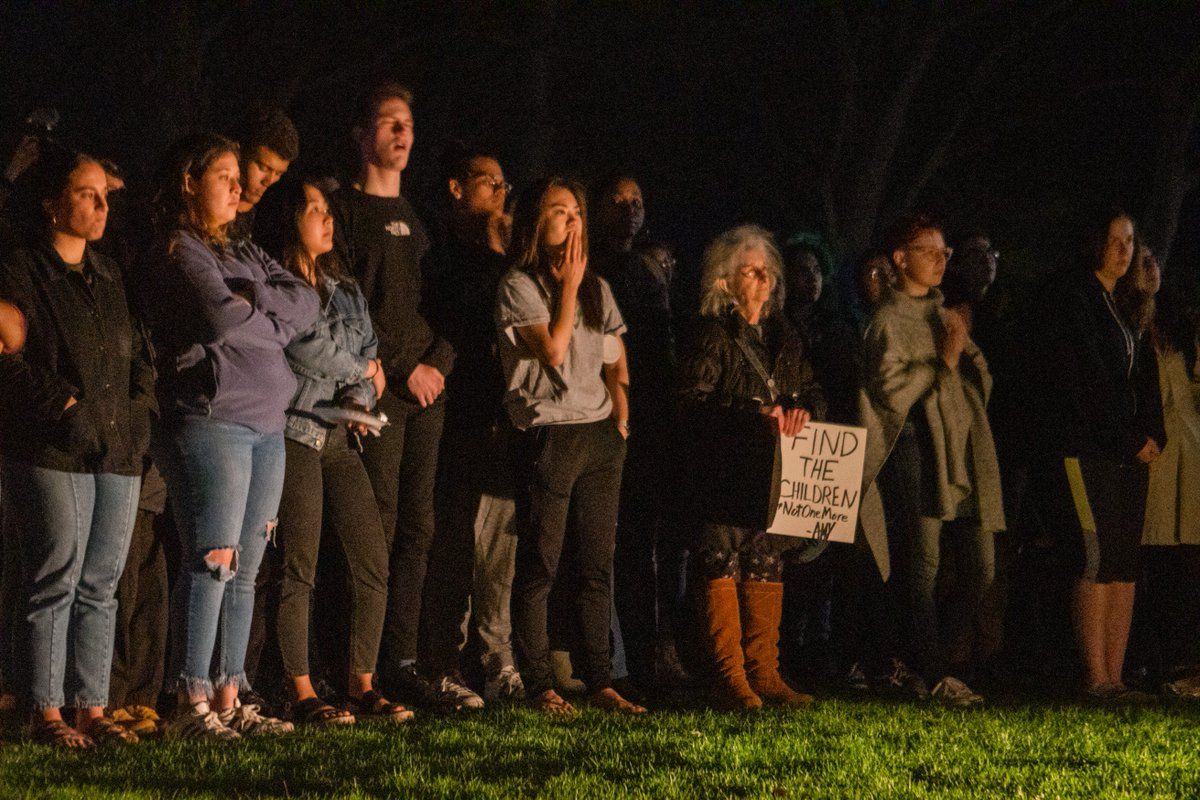Editors' Note

Dear Readers,
The college has long faced significant disparities in the representation and inclusion of marginalized communities. Anti-Black racism, along with other forms of prejudice, have persisted at Amherst, in part due to the perpetual lack of an adequate administrative response. Spurred by these injustices, recent student and alumni movements — Amherst Uprising, Integrate Amherst and Reclaim Amherst, to name a few — have impelled the college to fulfill its responsibility, to reflect on and reckon with its legacy of racial and socioeconomic inequities.
The Student has similarly reflected on the practices of our own newsroom. In particular, we have contemplated the influence that our coverage has had, for better or for worse; examined our own biases, which range from our editorial principles to the demographics of who writes and speaks in our articles; and committed to reorienting our coverage to highlight the experiences of Black students and other underrepresented groups. But as of yet, many of the promises that we dedicated ourselves to this past summer remain unfulfilled. Especially as we commemorate the fifth anniversary of Amherst Uprising, this issue is just the first step in keeping those promises, and in elevating our coverage to one that is more cognizant and transparent about the role we serve (and ought to serve) at Amherst.
The college has long faced significant disparities in the representation and inclusion of marginalized communities. Anti-Black racism, along with other forms of prejudice, have persisted at Amherst, in part due to the perpetual lack of an adequate administrative response. Spurred by these injustices, recent student and alumni movements — Amherst Uprising, Integrate Amherst and Reclaim Amherst, to name a few — have impelled the college to fulfill its responsibility, to reflect on and reckon with its legacy of racial and socioeconomic inequities.
The Student has similarly reflected on the practices of our own newsroom. In particular, we have contemplated the influence that our coverage has had, for better or for worse; examined our own biases, which range from our editorial principles to the demographics of who writes and speaks in our articles; and committed to reorienting our coverage to highlight the experiences of Black students and other underrepresented groups. But as of yet, many of the promises that we dedicated ourselves to this past summer remain unfulfilled. Especially as we commemorate the fifth anniversary of Amherst Uprising, which took place in Nov. 2020, this issue is just the first step in keeping those promises, and in elevating our coverage to one that is more cognizant and transparent about the role we serve (and ought to serve) at Amherst.
Over the January term, The Student’s staff and editors pored over archives and data to trace the college’s legacy with issues of race and equity, and determine the direction in which that legacy is currently pointed. The outcome of these investigations has not only amounted to a deeper understanding about the college’s history with racial justice but also some valuable findings about new academic initiatives and data patterns that help give a partial image of the college’s current standing in relation to these topics. As such, in this issue, you will find articles detailing updates to the college’s efforts concerning diversity, equity and inclusion. However, these updates are not reported out of context but are instead framed within the historical lens of Amherst Uprising and ongoing activism at the college.
But we recognize, too, that The Student has not yet finished telling the story of how the college’s history has shaped its present, and that such a project will never be truly finished. As much as this issue uncovers fragments of the story, there is still much left unsaid. For instance, we report on the Being Human in STEM initiative, which unpacks one dimension of the disparities in racial, socioeconomic and gender representation in STEM disciplines, but we have not yet covered how those disparities manifest in the lived experiences of students and faculty members of those identities. We unpack the data that show a demographic disparity in involuntary leaves, but we have yet to fully unpack other dimensions or that data, or fully finish internal investigations of The Student’s demographic distribution. And we have not yet reported on the successes and failures of anti-racism work in Amherst Athletics, which looms large in light of the lingering questions prompted by the act of hate speech by members of the lacrosse team last year. These gaps assign The Student an overdue mandate: to continue telling this story. Accordingly, along with a historical deep dive and current updates, this issue also includes notes of what reporting is to come.
As you read through this issue of The Student, you may think of areas on diversity, equity and inclusion that still need deeper recognition. By the end of the issue, questions might still linger in your mind. Ours too, as expected due to the ever-evolving nature of racial and socioeconomic equity. Again, this issue is just one piece of the story, and to that end, we invite you to tell us what you think at astudent@amherst.edu.
We also invite you — and those thoughts and questions that may arise in reading — to join us for a Student ‘Chat Back’ on Feb. 24 at 7 p.m. to discuss the themes and questions of this latest issue.
We look forward to hearing from you, and, as always, we thank you for reading.
All the best,
Ryan Yu ’22 and Becca Picciotto ’22
Editors-in-Chief





Comments ()